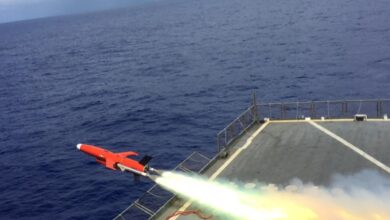The US Air Force has completed the first autonomous test flight of an Osprey MK III aerial drone at Duke Field in Eglin AFB.
The trial was part of the new Autonomy, Data, and AI Experimentation (ADAx) Proving Ground program to evaluate and operationalize artificial intelligence and autonomy concepts to support warfighters on the evolving battlefield.
Works under ADAx include assessments of magnetic navigation technology, enhanced digital and communications interoperability, autonomous drone airdrops, and other agile processes.
Safe and Rapid Test
During the test, the Osprey served as a testbed to validate algorithms supporting the Autonomy Prime Environment for Experimentation (APEX), an ADAx subset focusing on new unmanned aerial system flight methods.
Experts deployed the aircraft and switched control to onboard autonomy, flying the system across a designated airspace over the site.
APEX’s “watchdog” algorithm was employed to prevent the Osprey drone from breaching user-defined airspace boundary constraints.
Each time the aircraft was about to violate the boundary, the watchdog disengages autonomy and redirected the aircraft to a safe remediation point.
“Our goal with APEX is proving a capability to safely and quickly test novel autonomy and AI on small UAS that is safe enough to be in close proximity to other aircraft,” ADAx Lead Maj. Riley Livermore explained.

Autonomy in Complex Environments
The watchdog feature is part of APEX’s Test of Autonomy in Complex Environments (TACE), research on software that bridges onboard autonomy and the aircraft itself.
A TACE software screens commands relayed by the onboard autonomy before it reaches the aircraft’s built-in autopilot.
The software can also manipulate the autonomy’s worldview during tests to create more realistic scenarios while keeping the aircraft safe.
Other ADAx Projects
The ADAx team is working on additional projects, including the Viper Experimentation and Next-gen Ops Models (VENOM) in which Eglin AFB’s F-16 Fighting Falcon supersonic fighter jets will be modified into airborne flying testbeds supporting autonomous strike evaluations.
Another is the Project Fast Open X-Platform (FOX) to develop an open software command that installs applications directly on the aircraft without altering proprietary source code.
The applications will enhance an aircraft’s threat replication for training, real-time data analysis, manned-unmanned teaming capability, and machine learning.












